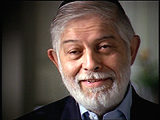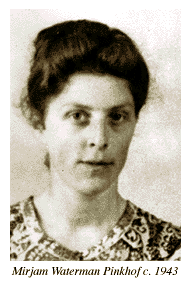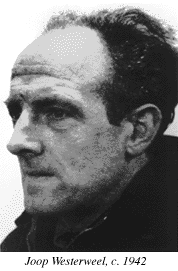Bart Stern
Born 1926
Hungary

Describes how he survived to be liberated in the Auschwitz camp
![]()
And it was by the greatest miracle that I survived. There was, every barrack had a little cabin in the front, which was separation where the Blockaelteste, the Blockaelteste meant he was the, the chief of the, of the, of the barrack, and every such cabin had all the breadboxes, the bread was supplied, brought in with a box with a lock and nobody could get to it. That door, the hinge of the box was already torn off, and I was hiding in that box upside down. Here he comes in to search, he even kicks it, but luckily it gave. I was so skinny, it gave. I could see the...and I was sure this is it. This is how I remained alive. But when they already left, the Germans, about an hour they, they left, there was no sign of Germans, I wanted to go back to the barracks, but the Poles, the, the Ukraines, who were not taken on the death march, they wouldn't let me in. So I was hiding out in the heap of dead bodies because in the last week when the crematoria didn't function at all, the bodies were just building up higher and higher. And I sneaked into, among those dead bodies because I was afraid they'd come back or something. So there I was at nighttime, in the daytime I was roaming around in the camp, and this is where I actually survived, January 27, I was one of the very first, Birkenau was one of the very first camps being liberated. This was my, my survival chance.
Sam Spiegel
Born 1922
Kozienice, Poland

Describes hiding in woods before being liberated
![]()
If you asked me how I survived in those woods for eight days in cold weather and everything else, I can hardly remember. I know we had frozen toes and at nighttime we used to go out from the woods. In... in Europe they used to have to put away potatoes in the wintertime outside and they used to cover them with saw... sawdust and then have a door on the south... on the south side that they used to take the potatoes out. And the sun used to come out during the day, so we stole some of those potatoes and we ate those raw potatoes and we had snow as water. And that's how we lived through till we survived from the camp... from those eight

